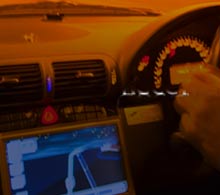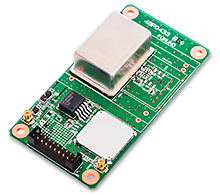Articles for ITS market Lifestyle-oriented French cars gain popularity in Japan
Many more French cars have been introduced to Japanese market
Recently, French cars have been gaining more attention in Japan. Here we explore some of the reasons.
The Japanese typically think of German cars when it comes to imported cars. Italian vehicles, including Ferrari and Lamborghini are also well recognized. American cars are characterized by larger bodies and unique features. Meanwhile French cars had been less recognized by the Japanese.
Online launching events for the Citroën C4 and Peugeot 208 were held in June and July, which were well attended. Both Citroën and Peugeot are French manufactures.
The Citroën C4 is a compact car classified into C segment and it is a five-door hatchback.
The size characteristics are 4,360mm in length × 1,800mm width × 1,525mm height. It is available in both gasoline and diesel. A new EV version of the Citroën C4 with a maximum output of 100 kW has just been added and can run 350km without recharging.
The Citroën boom has continued in Japan in recent years. Therefore, it is natural that the newly introduced "C4" is gaining popularity.
100 cars were sold within 5 hours
At 9:00AM on October 19, 2019 online sales of 100 limited cars of Citroën minivan “Berlingo” were offered in Japan.
All were sold within 5 hours. It is said that the Japanese like its unique body design as well as interior design, which Japanese car manufactures sometimes are not so good. Even in Japan, where the penetration rate of minivans is high the uniqueness of the Berlingo design is highly appreciated.
In addition to the design, engine performance is also notable. The strong torque gained under light acceleration and high fuel efficiency are also appealing.
In Europe, commercial vehicles account for two thirds of the demand for Berlingo. The Renault "Kangoo" is also recognized as a commercial vehicle in Europe. However both were established as general passenger cars in Japan.
In the 1990s, the Chevrolet “Astro” caused a similar reaction in Japan. It was unusual to treat “Astro” as a general passenger car in US at that time, but it was introduced as such in Japan and the uniqueness in design was the key for its success.
In the Kangoo’s case, information shared by users, such as SNS, helped raise awareness in Japan. Berlingo’s awareness on the other hand, was raised by a deliberate branding strategy by Citroen. That was a key for success in the Japanese market. Obviously, they intensely feature unique design when promoting their cars in Japan.
Monetization with a "lifestyle" strategy
When it comes to Citroën, there are many people who imagine the French culture of the classical small cars including "2CV" and "DS".
However, the unique design and technology caused financial difficulties and they were absorbed by Peugeot.
I was worried about Peugeot's new product strategy after the acquisition even though I had been fascinated by Citroën with its French culture in the 1970s.
Up until 10 years ago Citroën made various attempts but it did not work well, however the new brand strategy of the 2010s brought big changes.
While promoting commonality of parts with Peugeot the company promoted product planning based on the "diversified lifestyles of users." I went to an exhibition called "Citroën's House" which was held in Tokyo in November 2019.
The concept of Citroën's House was “comfortable space, boldness, and humanity." This lifestyle-oriented product strategy is boosting Citroën.
Branding strategy: EV becomes the key for the next stage.
Citroën‘s brand strategy symbolized by the Citroën's home has succeeded.
Citroën Brand’s CEO, Vincent Cobée emphasized that promoting this new strategy has boosted sales by 30% in Europe over the past six years. The new EV “e-C4” may support the further development of Citroën. It is a 100kW motor with a battery capacity of 50kWh. The acceleration of 0 to 100 km/h is 9.7 seconds. It can reach 350km when fully charged. In their latest announcement, they did not address the launching in Japan.
However, Peugeot "208" which shares the platform with "C4" will be launched in Japan. It is compatible with CHAdeMO, the rapid charging system.
Meanwhile the gasoline-powered vehicles have a 1.2-liter turbo engine. This has been in compliance with CO2 regulations in Europe in recent years. Peugeot aims to further spread Evs in the global market by having two options for the same model: EVs and gasoline vehicles.
Citroën may also promote "e-C4" sales strategy in Japan under its branding strategy of "Citroën's House". Japanese automobile manufactures have also introduced new EVs to the market. Meanwhile, French automobile manufacturers choose different options from Japanese manufacturers to promote by uniquely featuring lifestyle oriented EVs.
Writer introduction

Mr. Kenji Momota Automotive journalist
His major is the world automotive industry and he is also familiar with the energy industry, IT and the aging society problem as the related fields. He acts around the world based in Japan and USA and writes for the general magazines, the technology journals and the automotive related media etc.
He is also commentator of motor race and world's motor show on TV program based on his career of the driver of Indy Racing League and NASCAR. In recent years, he has been covering about a paradigm shift from developed countries to developing countries, the motorized vehicle like EV and the telematics.
FURUNO ITS Journal
Click here for the latest articles after 2022 (in Japanese)2022
- The "realistic" self-driving roadmap shown by the Japanese government and a hands-on report on the latest Subaru EyeSight X
- Will FCVs (Fuel Cell Vehicles) Become Popular? ~New Movement in Toyota and Honda~
- The 'Complete' online sales of new cars start in Japan. Will this new way of buying cars take root?
- Many Firsts! On-Site Report from Tokyo Auto Salon 2022 - The author, who knows what goes on behind the scenes, looks back on 40 years of history. -
2021
- "Moving toward zero traffic fatalities for four-wheeled and two-wheeled vehicles globally in 2050" ~Experience on Honda's latest safety technologies~
- Tsuneishi Shipbuilding's building and DX, an exclusive visit to the main factory
- Japan's Smart City: New Moves toward Practical Use
- When will self-driving buses (service cars) be put to "full-scale" practical use?
- Utilization vehicle data during disasters
- Toyota-led Connected Technology to Transform Commercial Vehicle Business -From light trucks to large trucks and buses-
- Toyota enters the connected car "Personalization" business
- Japanese automakers' carbon-neutral strategies swept up in ESG investment
- Drive experience of the latest autonomous vehicle models and advanced driving support systems
- Will carbon neutrality accelerate the trend to strengthen LCA (Life Cycle Assessment)?
- Semiconductor shortage exposes realities of the automotive industry
- Online Autonomous Driving Contest Enhancing development of Human Resources
2020
- What happens to CASE when gas cars are banned in Japan?
- When will Flying Cars be launched?
- Expectation vs. reality:Autonomous Driving in Japan
- V2X, Becoming increasingly important in autonomous driving
- Technology of Subaru “EyeSight X”
- Lifestyle-oriented French cars gain popularity in Japan
- Human-oriented smart cities are wanted
- MaaS and CASE, how would automotive industry change after COVID-19?
- The beginning of virtualization era, triggered by COVID-19
- Trend of EV shift and consumer demands
- TOYOTA Press conference about ADAS - Releasing algorithm for "sudden acceleration suppression during attempted sudden acceleration" free of charge -
- The Japanese automotive industry in 2020 - 3 turning points -
- "Using a smartphone while driving" and "Level 3 automated driving"
2019
- Motor show business model is at a turning point - Tokyo Motor Show Report -
- Commercialization and monetization of MaaS - ITS World Congress Singapore Report -
- Android Automotive pays attention to V2X - Report from the Frankfurt Motor Show 2019 in Germany -
- Automobile Distribution Revolution and DCM (Data Communication Module)
- Connected business potential and newly proposed "eMaaS" by Honda
- 5G services for practical use are multiplying
- Connectivity technologies attracting attention due to frequent traffic accidents
- Shanghai Motor Show report -SUV, EV, Automated car & 5G-
- Drone Business roadmap and updates to Michibiki (Quasi-Zenith Satellite System)
- MaaS (Mobility as a Service) "town development." Full-scale promotion for a national project
- CES organizer states "Data Period in 2020s." Transformation of the Automotive Industry in CES, US "-CES2019 Report-"
- "Return to Origin" directed towards the age of change, automatic operation and connectivity
2018
- New proposal for Private Car Automated Driving Level and other Hot 5G Technology Topics
- Standardized EV charging infrastructure concerns in Europe, US, Japan and China - Kobe EVS 31 field report -
- Touring a pure car carrier and a test drive of the latest hybrid car
- Planning stage products are exhibited at the newly established visualized mobility service "TOYOTA MOBILITY SHOWROOM".
- Potential “Community Car-share” program promoted by local residents
- CES Asia Report 2108
- Companies attempt new Vehicle-to-Infrastructure communications, including traffic volume measurements and vehicle positioning. -ITS Asia Pacific Forum in Fukuoka-
- Geneva show in Switzerland. Flying cars and MaaS (Mobility as a Service) were hot topics.
- EV (Electric Vehicle) proposals by country
- MaaS competition through service mobilization, M & A and technical field collaboration is accelerating. - The CES 2018 Report -
2017
- Big data’s initiative and fight for the automotive industry. Cooperation among companies becomes increasingly important.
- Connected car and road-to-vehicle communication automatic operation
- ETC (Electronic Toll Collection) and ETC2.0. Current situation and projected future
- Rapid development of sharing economy
- Germany is first to recognize level 3 automated driving
- ITS EU 2017 Field Reports -Automatic Operation and the eCall-
- From Infotainment to ITS, the competitive area is spreading in the car big data industry.
- GTC (GPU Technology Conference) Report and the de facto standardization of AI (artificial intelligence)
- Renesas' new challenge! "e-AI Solution" and "Renesas Autonomy"
- The Automobile industry is shifting from a manufacturing industry to a service industry.
- The movement toward accident countermeasures for aging drivers in Japan
- Fusion of ride sharing and fully automated driving is advancing in the USA.
2016
- Overview of the Quasi-Zenith Satellite System (QZSS) and advancements toward full-scale practical use including the Tokyo Olympic Games - G-space EXPO 2016 report-
- Japan’s automated driving project "SIP-adus" will be a large demonstration experiment.
- The International Home Care & Rehabilitation Exhibition. There were many car manufactures with exhibits booths at this show.
- Japanese car manufacturers starting to concentrate on strengthening the ADAS system
- A new movement of legislation for autonomous cars
- Cyber Security and “AGL”, the new OS for automotive are hot topics in the connected car industry
- “High precision 3D map” the key future of autonomous car and pedestrian dead reckoning
- Chinese “BAT” is accelerating their business in the EV (Electric Vehicle) market
- Tesla's original connection to Taiwan and the new transportation system technologies.
- "The main topic" of the Geneva Motor Show was how to strengthen "pedestrian protection"
- The probe data business is getting more competitive
- Reporting directly from the 2016 CES show "Data services will soon become the main revenue source of automotive industry"
2015
- Do the automated driving systems need the GNSS (Global Navigation Satellite System) ?
- ETC Version 2.0 is coming soon. A new service was announced at the Tokyo Motor Show and the possibility that is could be used as a device for older drivers.
- "Connected Horizon" and "eHorizon". Germany's leading parts supplier accelerates strengthening of "Big Data" for business



 Citroën minivans “Berlingo” were sold within 5 hours by online pre-sales. (Photographed by the author)
Citroën minivans “Berlingo” were sold within 5 hours by online pre-sales. (Photographed by the author) "Citroen's House" was held in Nikotamagawa, Tokyo in November 2019. (Photographed by the author)
"Citroen's House" was held in Nikotamagawa, Tokyo in November 2019. (Photographed by the author) Motor mounted image of Peugeot "e208"Source: Group PSA
Motor mounted image of Peugeot "e208"Source: Group PSA GPS/GNSS Receiver&Chips and Modules (positioning and timing)
GPS/GNSS Receiver&Chips and Modules (positioning and timing)